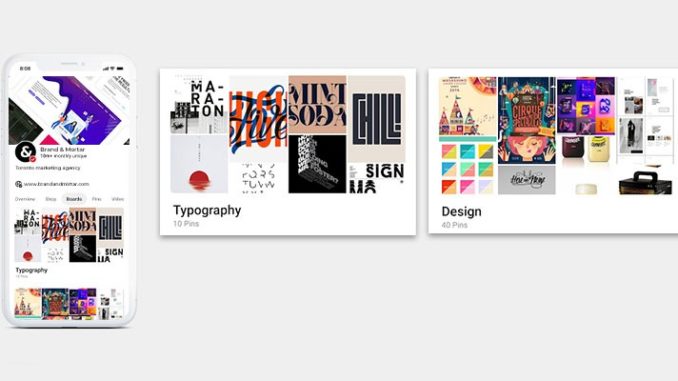
Pinterest is the most effective social platform for product knowledge and shopping inspiration. If you are in the fashion and beauty, home decor and design, or hospitality and food industry, Pinterest may be the platform for you.
Neustar research shows that Pinterest is 2.3x more efficient than other social media platforms, 1.5x more valuable than paid search, and 1.1x more efficient than display (Johnson, 2019).
In March 2010, Ben Silbermann, and his friends Evan Sharp and Paul Sciarra, launched the social media platform, Pinterest. It is now the eighth largest social media network in the Western Hemisphere, with over 300 million active users.
Silbermann defines Pinterest as a “catalogue of ideas,” considering the primary reason people gravitate toward Pinterest is for inspiration. The virtual pinboard is a popular destination for users who wish to explore over 200 billion products, places, and things – often inspiring a positive and informed purchase down the line.
Reaching The Right Target
According to a 2017 eMarketer survey, Pinterest is one of the most influential platforms for Americans to make a purchase decision, superior to Instagram and Snapchat (eMarketer Inc., 2017). Pinterest resonates with the “deciders” – women between 25-54 who are known to make the majority of purchase decisions in US households.
Comscore, a company that evaluates marketing data across platforms, supports this claim by confirming that 83% of users on Pinterest are of the female gender, between 25 and 54 years old (Carp, 2018). This demographic is “responsible for 80% of household buying and control more than 50% of the wealth in the US” (Hutchinson, 2018).
The “deciders” have a high buying power, with 52% spending more than US$500 on beauty, fashion, or footwear in the past six months. Moreover, 67% of the “deciders” go to Pinterest for brand-centric ideas (Carp, 2018).
Compared to other social platforms, approximately 51% of the female users on Pinterest are reported to be married, 41% have children under the age of 18 years old, and 18% are home-makers. Much higher than Facebook, Twitter, and Instagram (Hiebert, 2016).
Start Organically
Publishing content on Pinterest requires a unique strategy that follows particular rules often applied to other social networks. Though, unlike Instagram or Facebook, your audience does not experience an overwhelming influx of content when publishing 10, 20, or 30 items a day.
If an active Instagram user were to publish 10 pieces of content a day, the audience that follows this user account would have a negative experience due to saturation, which can ultimately result in disinterest, annoyance, and lack of trust regarding which content is worth engaging.
Creating a profile full of quality and compelling content to your target will better enable your brand to stand out amongst the masses, and help to build credibility in your industry.
Explore the following ideas to generate a good, insightful profile and invite organic traffic from potential buyers:
1. Create A Business Account
Getting Started
Create a free business profile on Pinterest and have access to specific tools that will help to grow traffic and increase sales, such as analytics and paid ad promotion. When creating a business account, the next step is to claim your website. A meta tag and properly uploading an HTML file to your website’s HTML code is required to gain access to analytics and track content.
2. Create Pins That Engage With Your Audience
Quality Is Key
Pinterest has an algorithm that grants visibility preference to specific media (i.e. images, video tutorials, etc.). Media must be derived directly from a blog, eCommerce, or additional verified platform as a means to decrease the bounce rate.
When you behave like an audience, you will better understand how your product will fit in real life — often resulting in quality and inspirational lifestyle images that are both aspirational and relatable. On average, lifestyle photos get 18% more engagement than product images (Hutchinson, 2018).
Content Ideas
Explore various ideas for creating and producing quality content:
Seasonal events and high holidays are popular on Pinterest due to saving and categorizing capabilities. Pinterest is commonly used to plan, so providing content one month before an event will prove valuable to your service, product, or idea promotion.
Infographics are valuable and engaging — with 9 common variations, the most common comparative, educational, statistical, or timeline-based infographics.
Show Your Product
You must establish trust before attempting to attract and convince users. When selecting images, it is essential to display the product or service alongside real people in everyday situations.
Talk To Your Audience
As if sharing an intimate conversation, it is often valuable to use “you” and “your” when attempting to reach an audience. Analytics will show insights into your Pinterest audience and behaviour, so you can better understand language preference and specific demographic interests.
Is Pinterest right for your business? Let us show you how to successfully establish an online presence while maintaining transparency and humanizing engagement. Uncover essential buyer personas and behaviours, and be a part of the shopping experience first-hand. Why not get started on building a Pinterest business account to represent your brand identity, business objectives, and explore the many ways meaningful and relatable content can resonate with and reach your target audience.
about including Pinterest in your digital marketing strategy. For more information on Pinterest, explore the feed next week.
